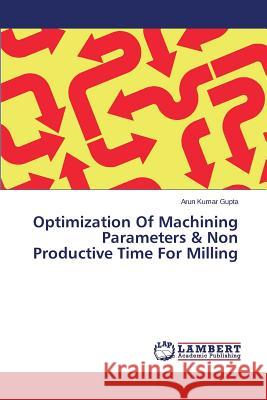Optimization Of Machining Parameters & Non Productive Time For Milling » książka
Optimization Of Machining Parameters & Non Productive Time For Milling
ISBN-13: 9783659610226 / Angielski / Miękka / 2014 / 152 str.
Optimization of a 2.5D milling process is generally considered to be one of the most significant issues for high-speed machining during mass production to amplify productivity and quality of production. Total time spent during 2.5D milling primarily comprises of productive and non-productive time. The productive time, cost and quality of production is highly influenced by machining parameters such as cutting speed, feed rate, width of cut (step over), depth of cut, tool diameter etc. Also selection of optimal machining conditions for better machining process efficiency is one of the key factors for this problem. The objective of the present work is to identify and organize the controllable variables such that there is minimum effect of uncontrollable or noise variables on the process performance. The machining processes which maintain balance between cost and quality of production are presumed to be efficient. The movements of tool are synchronized with the help of automatically generated CNC codes. In the present work an attempt also been made on minimization of non-productive time by synchronizing cutting tool movements for malti pockets job problems.
Optimization of a 2.5D milling process is generally considered to be one of the most significant issues for high-speed machining during mass production to amplify productivity and quality of production. Total time spent during 2.5D milling primarily comprises of productive and non-productive time. The productive time, cost and quality of production is highly influenced by machining parameters such as cutting speed, feed rate, width of cut (step over), depth of cut, tool diameter etc. Also selection of optimal machining conditions for better machining process efficiency is one of the key factors for this problem. The objective of the present work is to identify and organize the controllable variables such that there is minimum effect of uncontrollable or noise variables on the process performance. The machining processes which maintain balance between cost and quality of production are presumed to be efficient. The movements of tool are synchronized with the help of automatically generated CNC codes. In the present work an attempt also been made on minimization of non-productive time by synchronizing cutting tool movements for malti pockets job problems.











